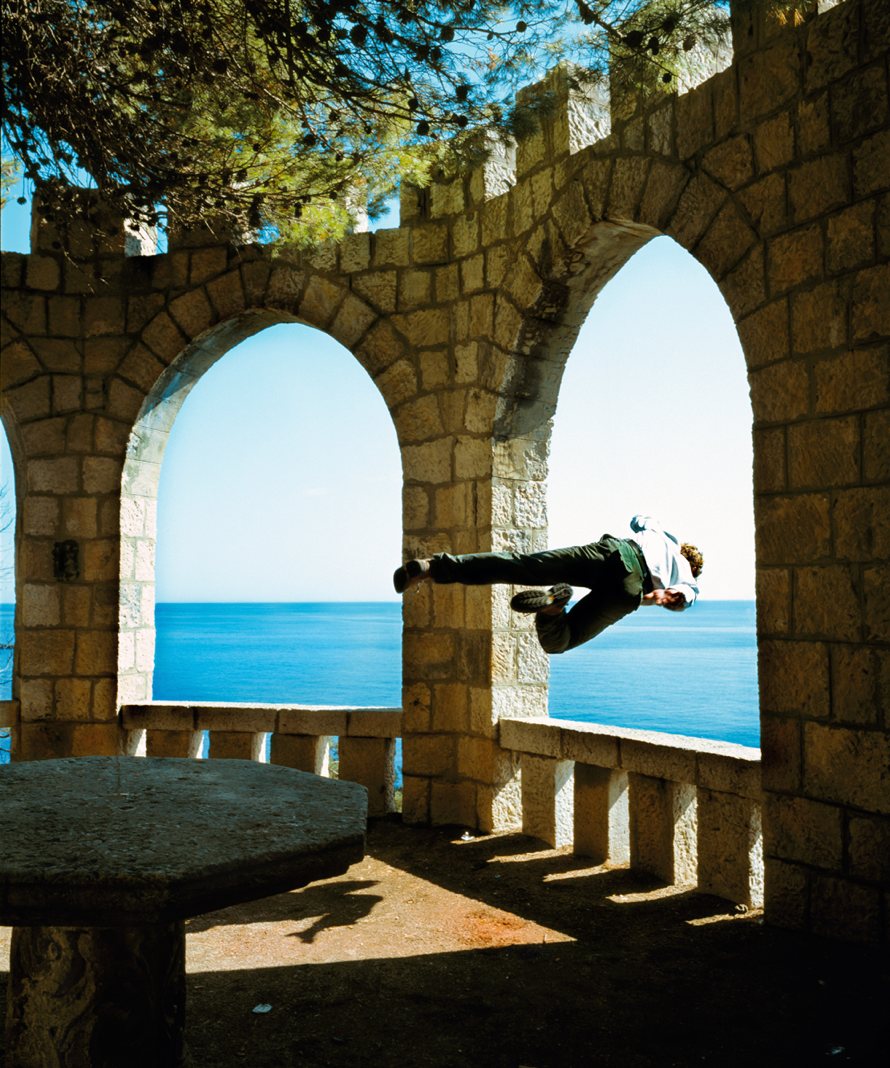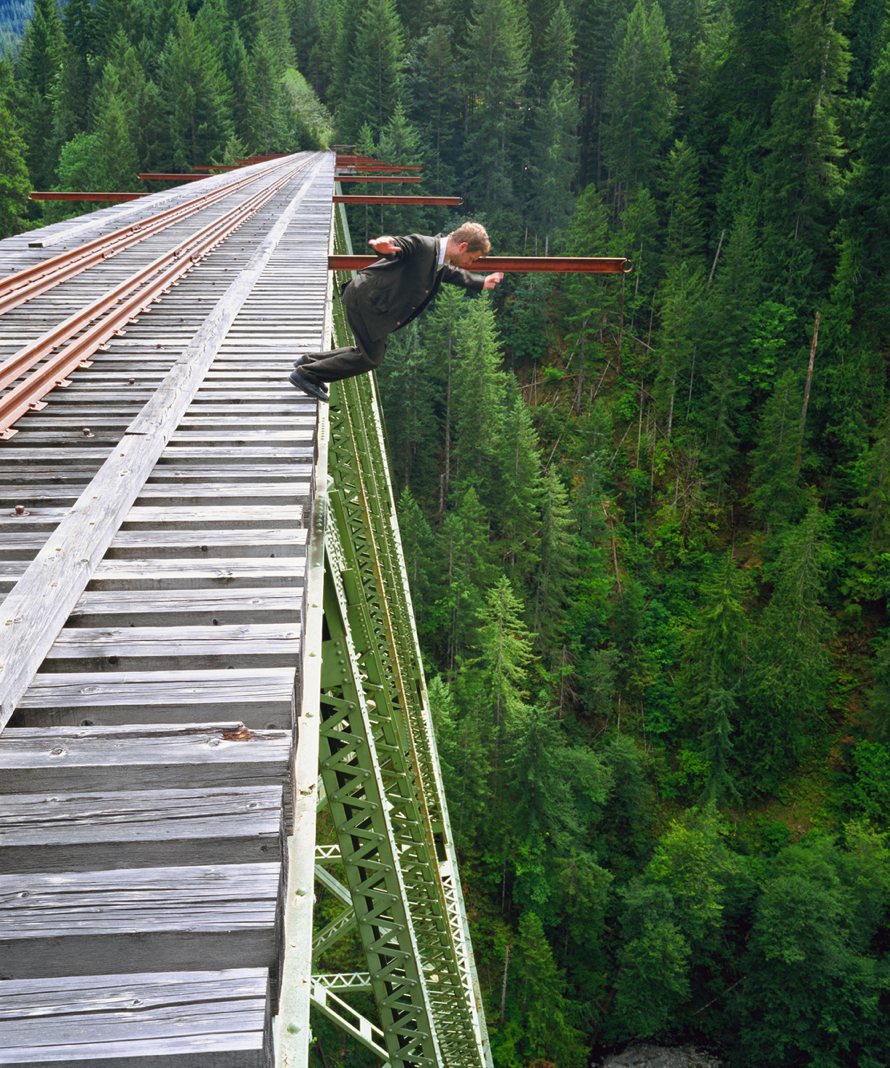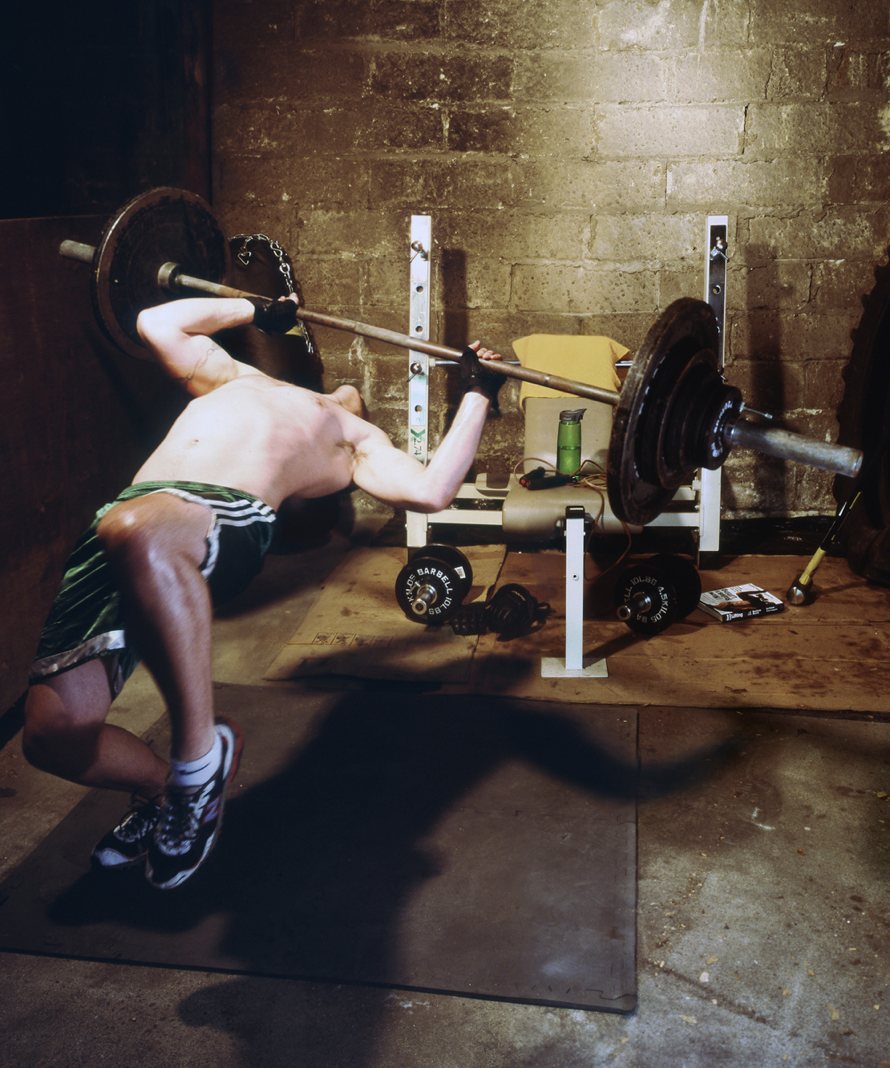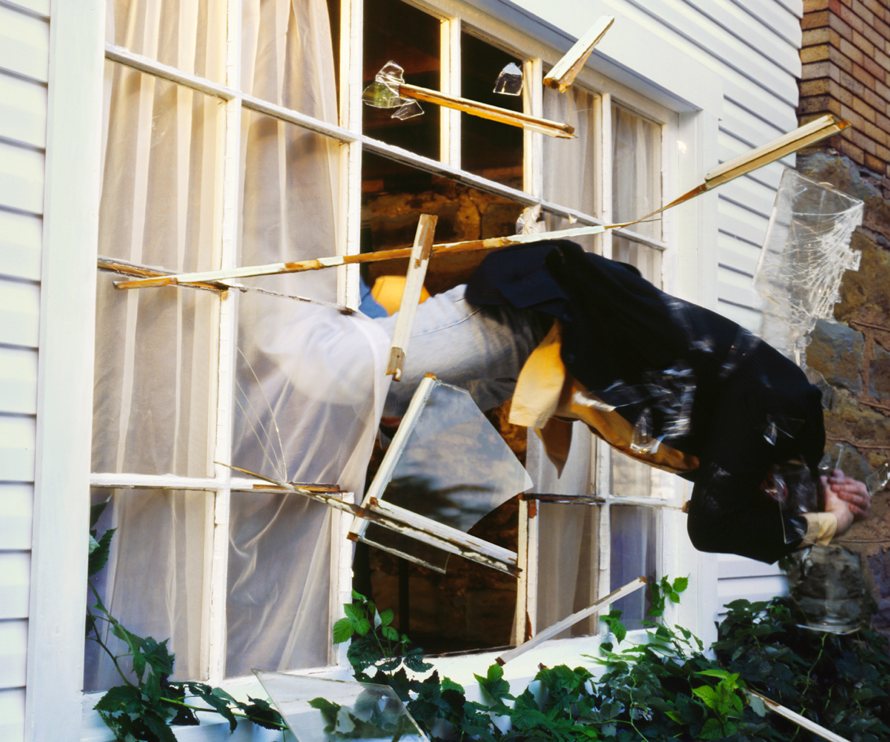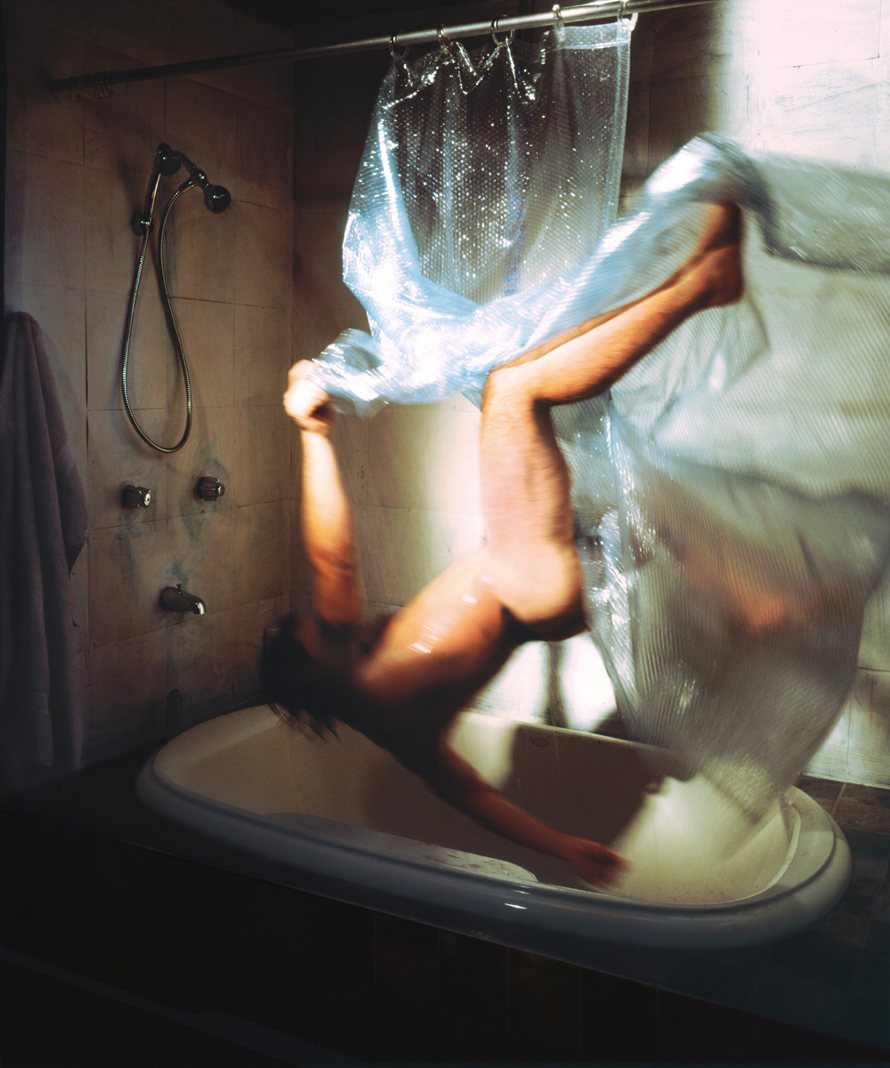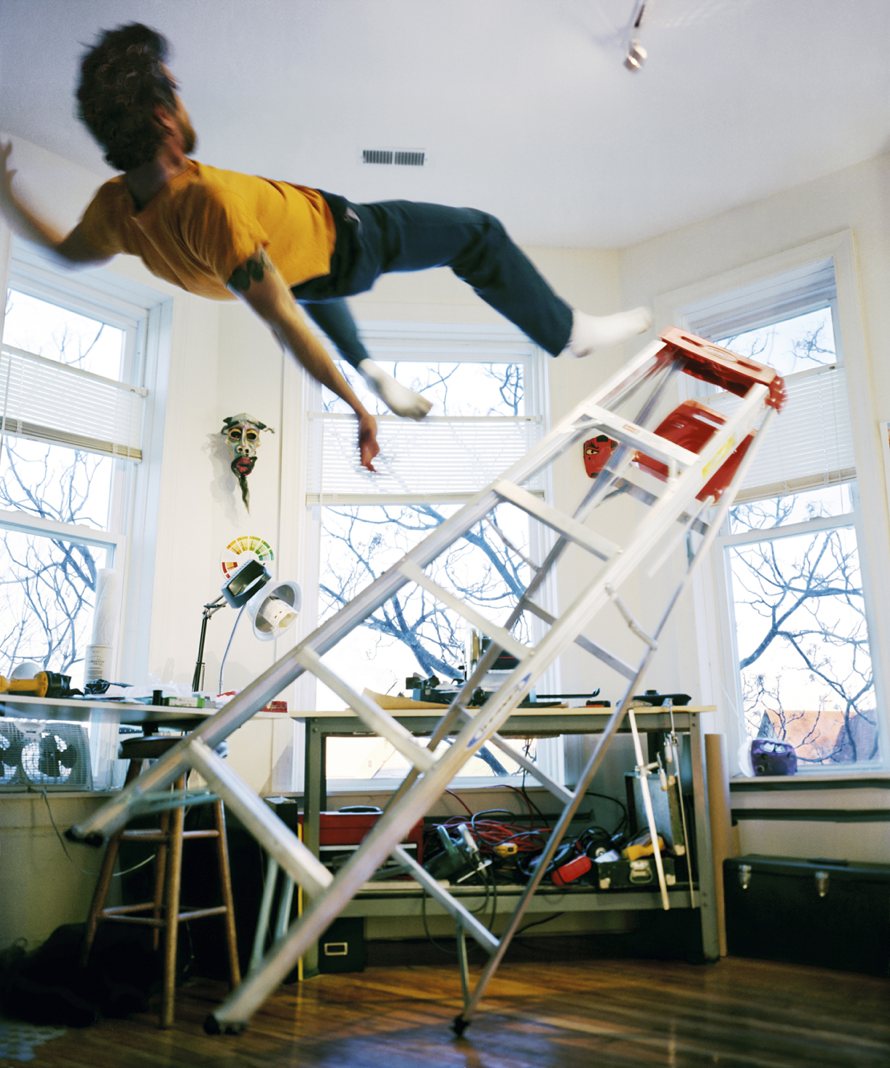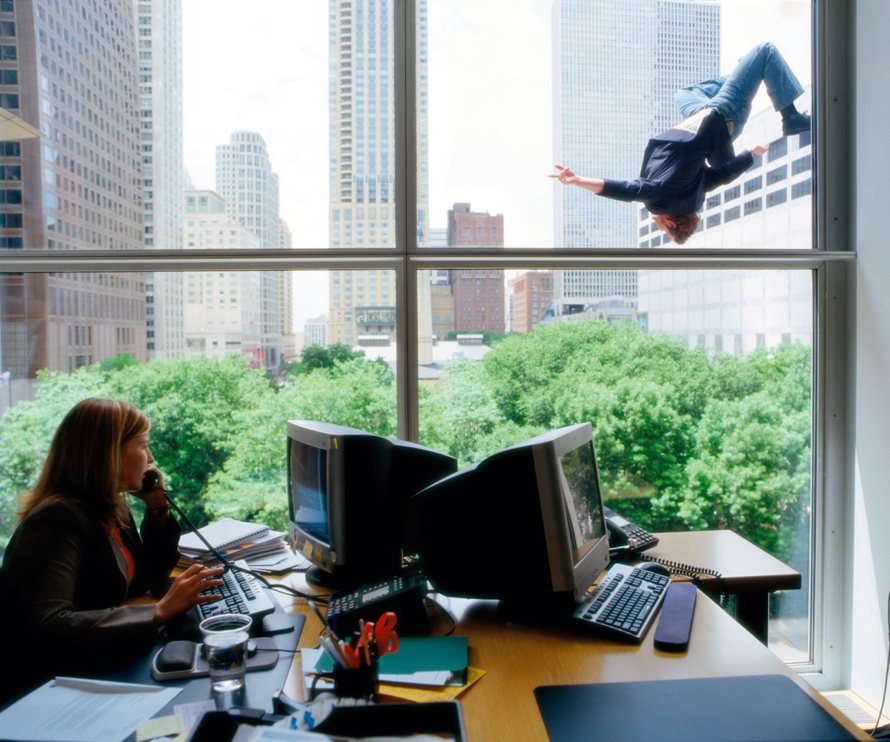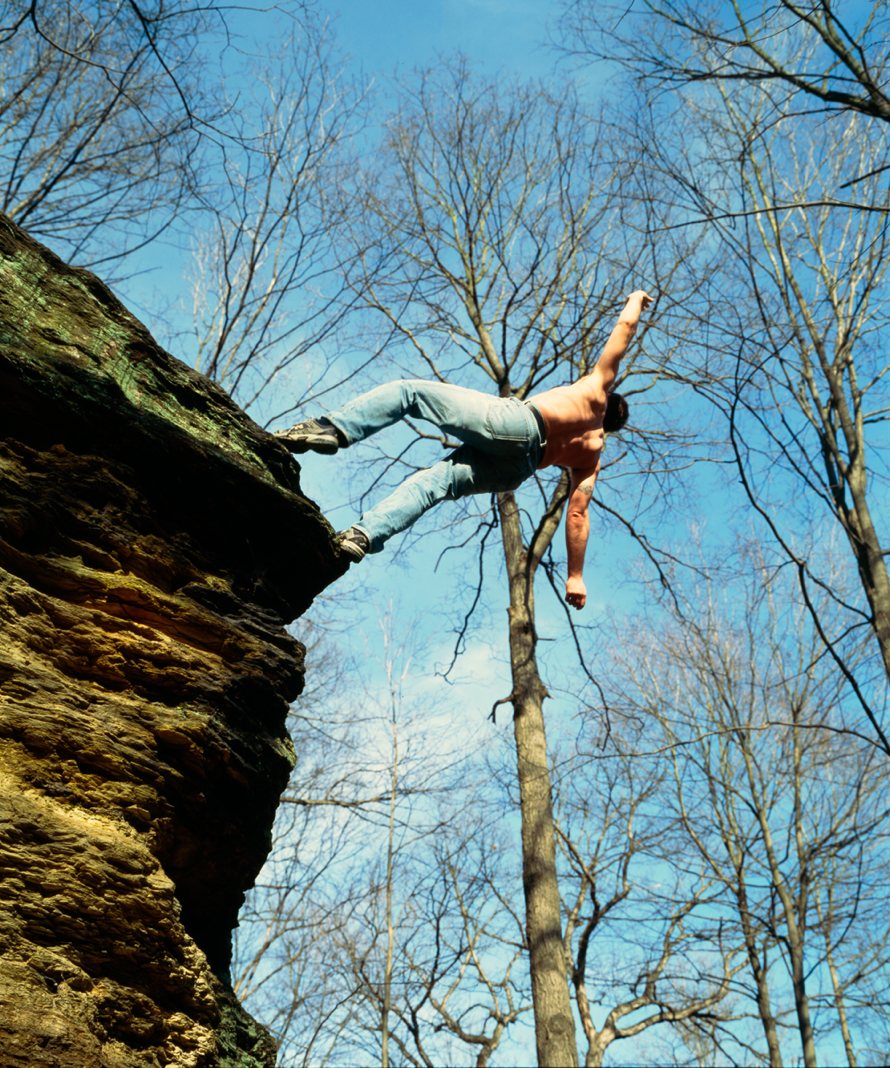In your photos you are leaping from fences, out of buildings, and even off a bridge. Have you suffered any injuries during your shoots?
Kerry Skarbakka:The work has always carried a risk and potential for injury, and I’ve made mistakes that cost me, usually when I’m tired or pushing the situation. Over the years, I’ve put my body through a lot and have been hurt many times. Although I have a history of going a little too far to accomplish what I’m after, I’m not interested in paying the ultimate sacrifice to my art. Thus, I do my best to coordinate my shots and maintain a high level of safety. But yes, I do get hurt.
TMN:Much of your prowess comes from years of studying martial arts. Do you still practice?
KS:Currently, I’m studying Nova Uniao Brazilian jiu-jitsu. I love it. It’s such a good workout with a ton of practical application. Plus, there are no pretensions in jiu-jitsu. It’s the great equalizer. You’re only as good as you are, no matter who you are or what you do.
TMN:What is your routine before you begin work each day?
KS:It’s funny you ask, because I actually do have a ritual. Generally, I get up at 6:30am, eat an apple with almond butter and head off to jiu-jitsu. After the club, I come home, take a shower, drink a hot lemon and water followed by a fruit smoothie and hang out with my girlfriend before she goes to work. If I have the time, I may take a quick nap to get the full rest I need to get going. Weather in Arizona is very conducive to an early morning wake-up.
TMN:You studied sculpting before shifting to photography. How does your training in the former translate to the latter?
KS:It’s true: I came to photography from a predominantly 3D background, and I’ve always loved working with my hands. I still do. My earlier sculptural practice was figurative and focused on the body and its limitations. Making photographs became an extension of this practice. Not only has it been important for me to literally “build” the content of my images in terms of sets and design, but also the photographic elements within the work, particularly the body, are intended to be read as objects with dimension that contain their own history and vocabulary. In the past, I didn’t consider myself a photographer but an artist that used photography as his primary medium. However, as the definition of photography is constantly evolving, adhering to these differentiations in titles has ceased to make sense.
TMN:What surprises you about making images?
KS:I’m surprised by the versatility. As this medium continues to evolve, I find myself more and more excited about its possibilities. In my own practice, the big surprises come after the shoot. All the planning that’s done before the actual image is made is sort of thrown out the window. Since I’m not behind the camera, I never really know what I’ve captured until later on. Often this leads me to discover something important about a particular image that I didn’t see earlier.
TMN:You teach college students. What’s the most important thing you’ve learned from teaching?
KS:To be honest, it will take me several years to provide a complete answer to this question. In my case, I’ve learned a good deal of compassion. Students come from all walks of life, each with the potential for something important. There is a crucial point at which your influence and understanding as a professor can make all the difference in the world. Teaching has taught me to listen.
TMN:Do you have dreams of falling?
KS:I love to dream and often do have dreams of falling, but what’s interesting is that I’ve learned to control them. I’ve found that if I stay in the dream long enough, at the moment when most people wake up, I fly. It’s absolutely fabulous. I soar high and fast above everything, and once I’ve made it past the electrical wires, I’m in complete control. I can feel every bit of the sensation of motion. It’s quite cool and may just be the time when I’m the most happy and free.
